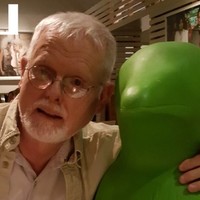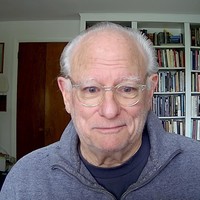Papers by Marco Romagnoli
À l’aube du déconfinement de la COVID-19 au Québec et dans le monde, notre regard se tourne vers ... more À l’aube du déconfinement de la COVID-19 au Québec et dans le monde, notre regard se tourne vers l’après-pandémie. Au moment d’écrire ces lignes, les flux de voyageurs sont toujours immobiles. Dès lors, la mosaïque du secteur touristique mondial – composée d’hôtels, de restaurants, de musées, de sites patrimoniaux – accuse de fortes pertes sur tous les plans. Alors qu’une reprise graduelle des activités économiques s’entame, cette situation invite à une réflexion profonde sur nos comportements humains en tant que visiteurs et visités.

Before the outbreak of COVID-19, the case of Barcelona was an emblematic example of how a city ha... more Before the outbreak of COVID-19, the case of Barcelona was an emblematic example of how a city had turned into an iconic tourism destination in a few decades thanks to smart, yet incautious, tourism development policies based on the most attractive features the city is endowed with. The paper is a critical reflection analyzing the major complications, called "tsunamis", the city of Barcelona has faced in recent years: political instability, terrorism and tourismophobia. The paper aims at 1) retracing the causes and motivations but also community reactions and sociocultural consequences to the three tsunamis, and 2) trying to learn lessons from the Barcelonan case study proposing solutions to the tourismophobia phenomenon. The results stem from an ethnographic fieldwork undertaken during the IPAC Summer School in 2018, whose aim was to understand the paradox of international tourism, at once bringing economic benefits but creating sociocultural disequilibria. The analysis considers written sources and the participant observation during the ethnographic fieldworks in Barcelona.

Touristophobia is one of the numerous neologisms coined recently to evoke the sideeffects of mism... more Touristophobia is one of the numerous neologisms coined recently to evoke the sideeffects of mismanaged tourism and the results of excessive tourism pressure on destinations. Many European cities such as Paris, Venice, Amsterdam or Dubrovnik are literally 'dying of their success' due to their cultural attractiveness, and it is not hazardous to attribute this success partly to the notoriety of the cities' UNESCO World Heritage Sites. Moreover, tourists' increasing flows have been pictured as disruptive sociocultural and environmental 'tsunamis' instead of representing a source of benefit for the destination in toto. This paper is a critical reflection stemming from the results of an ethnographic fieldwork undertaken in Barcelona in the framework of the summer school of the Institut du patrimoine culturel (IPAC) of Université Laval, Quebec City (Canada). The study aims at 1) analyzing the concept of Barcelomania, intended as the touristic appeal and obsession for one of the most visited cities in the world whose present success partially derives from its UNESCO inscriptions on the 1972 and 2003 UNESCO lists, as well as 2) identifying problems and proposing solutions to the touristophobia phenomenon, i.e. the locals' general discontent and anger in the face of deregulated and uncontrolled tourism. The case of Barcelona is an emblematic example of how a city has turned into an iconic tourist destination in a few decades thanks to smart, yet incautious, tourism development policies based on the attractive features the city is endowed with: modernism, status of Mediterranean cultural and festive seaside city as well as the city's inhabitants' hospitality and friendliness, amongst others. The 1992 Summer Olympic Games symbolized the starting point of Barcelona's tourism development and identity branding. Despite tourism policies first oriented towards locals' well-being, the tourists' four-season invasion of the areas where UNESCO World Heritage Sites or the most renowned neighborhoods are located have 'dysneyfied' Barcelona, and Barcelonans have started suffering both a loss of identity and an estrangement feeling in their hometown. The touristic (ab)use have pushed local residents to revolt due to gentrification and saturation processes and led to residents' alienation with regard to the city's most symbolic spaces, such as La Rambla. Nobody argues with the tourism sector economic profitability per se. Nevertheless, tourists' excessive intrusion in people's everyday lives has been sternly accused, perceived as a worsening factor of the already precarious Catalan political stability, and as one of the main causes behind the 2017 terrorist attacks and increased xenophobia in Barcelona.

The article aims at explaining the relationship between terrorism and tourism, and the consequenc... more The article aims at explaining the relationship between terrorism and tourism, and the consequences that the former has on the latter. Untangling this relationship may be a useful tool to understand terrorist goals and motives. The pivotal question to be answered is which effects terrorism has on the tourism industry. In the modern era, terrorism has become an integrated risk, a maybe-to-include package of travelling for tourists. The operating environment for the tourism sector evolved in a huge way after the attacks to the Twin Towers in September of 2001. Terrorism and tourism data have become more and more important since that dramatic episode; both of them are twofold and interconnected with regard to their basic features, namely crossing national borders involving national and international protagonists and both using travel and communication technologies. Terrorists do not act randomly, but they have precise purposes. The article will explain the multiform and multifold ways through which an attack may occur and be better understood. Terrorism crowds the media; it physically hits and psychologically vexes minds. Tourists are an appealing target for terrorists because they are seen as a country's symbolic ambassadors, while tourism destinations are perfect and visible spots to deploy a terrorist attack. Terrorists are capable of using tourists as the means to get the media's attention and bombard the world with their message. Risk perception, attitude and preferences are one of the main determinants for a tourist in the destination choice momentum. A potential tourist who negatively conceives a destination as risky may choose to cancel his/her holiday or not even consider it because of security and safety motives.

Marco Romagnoli, 2019
The 2003 UNESCO Convention for the Safeguarding of the Intangible Cultural Heritage paved the way... more The 2003 UNESCO Convention for the Safeguarding of the Intangible Cultural Heritage paved the way as the first international and binding instrument to safeguard 'intangible cultural heritage'. ICH is a relatively newly-defined concept by UNESCO, differentiated from the category of UNESCO World Heritage related to the 1972 Convention. This shift of paradigm-from tangible to intangible, from 'cultural objects' to 'cultural processes', and from protecting to safeguarding-constitutes a renewal of the definition and management of immaterial manifestations as well as their inscription on the UNESCO ICH Lists. In 2010, the Traditional Mexican Cuisine, the Mediterranean diet and the Gastronomic Meal of the French were inscribed on the Representative List of the Intangible Cultural Heritage of Humanity. These inscriptions represented a step forward in UNESCO's recognition of new heritage categories and, more specifically, the consideration of gastronomy with regard to its symbolic, identity and ritual role in societies. From 2010, more gastronomic elements made it to the List. Nevertheless, academic research on food heritage mainly analysed case studies about cuisine and food instead of providing theoretical perspectives, and the effects of food heritagisation on the UNESCO List are far from having been thoroughly studied and evaluated through fieldwork. The aim of this paper is to explore the ways in which heritage is constructed 1) starting by defining cultural heritage, Intangible Cultural Heritage and gastronomic heritages, 2) continuing to challenge the actual feasibility of heritagising gastronomy and the social practices associated therewith, via UNESCO, and 3) ending with some reflections on the reasons for the great interest in inscribing food heritage with UNESCO.
Books by Marco Romagnoli

Thesis, 2023
Plus nous essayons d’encadrer ses significations multiples, plus ses contours conceptuels nous éc... more Plus nous essayons d’encadrer ses significations multiples, plus ses contours conceptuels nous échappent : la diète méditerranéenne cristallise des imaginaires touristiques, culturels et alimentaires ainsi que des utopies géopolitiques, commerciales et socioculturelles. La métamorphose de la diète méditerranéenne, en l’espace de soixante ans, d’une acception médicale de la nutrition à une valeur plus sociale (comme le partage des aliments à la table) et ensuite patrimoniale par sa récente officialisation à l’UNESCO, la rendent un concept très intéressant à étudier. La recherche proposée consiste en une étude ethnologique des impacts de la patrimonialisation de la diète méditerranéenne, inscrite en 2010 sur la liste représentative du patrimoine culturel immatériel de l’humanité de l’UNESCO par un consortium de pays méditerranéens (Espagne, Grèce, Italie et Maroc en 2010, Chypre, Croatie et Portugal en 2013). De par sa densité conceptuelle et la nébulosité de sa définition, mieux comprendre la diète méditerranéenne en tant qu’œuvre patrimoniale transnationale qui se décline en patrimoine médical, agroalimentaire et socioculturel, tel est l’objectif de cette recherche doctorale. La nouveauté que la recherche annonce est l’actualisation et l’analyse comparative de l’état du bien, désormais patrimonial, qu’est la diète méditerranéenne. Pour ce faire, j’ai utilisé une approche méthodologique basée sur l’ethnographie multi-sites auprès de trois communautés différentes : la sous-région du Cilento en Italie, la ville de Soria en Espagne et Marseille en France. Cette méthodologie inclut l’observation participante in situ et les entretiens semi-dirigés avec trois catégories d’interviewés distinctes (les habitants de ces communautés, leurs représentants institutionnels locaux et les visiteurs de la destination touristique). Il a été ici question de creuser en profondeur du récit local, institutionnel et de voyage de l’échantillon de recherche afin d’examiner les représentations que les trois catégories donnent à ce patrimoine vivant et comment elles le re-créent, le représentent et le rendent viable (la viabilité d’un élément culturel étant l’objectif primaire de la Convention de l’UNESCO de 2003 pour la sauvegarde du patrimoine culturel immatériel).











Uploads
Papers by Marco Romagnoli
Books by Marco Romagnoli